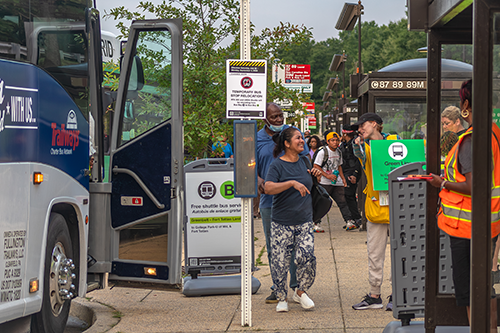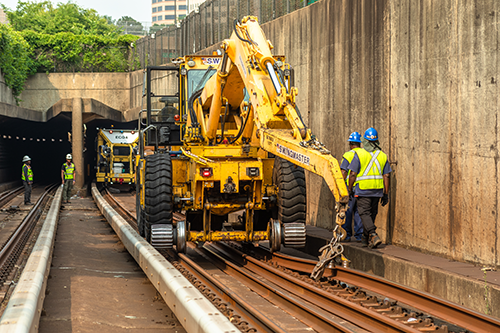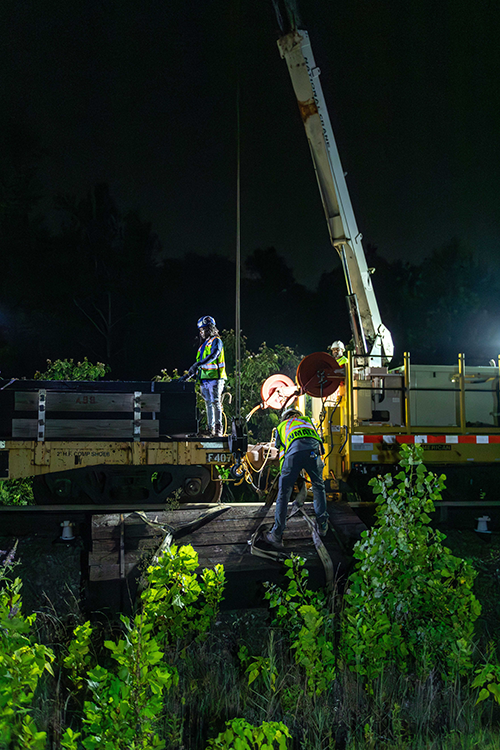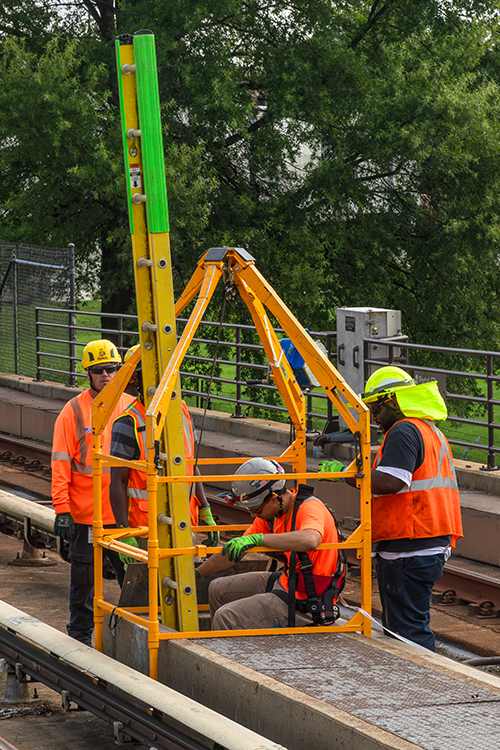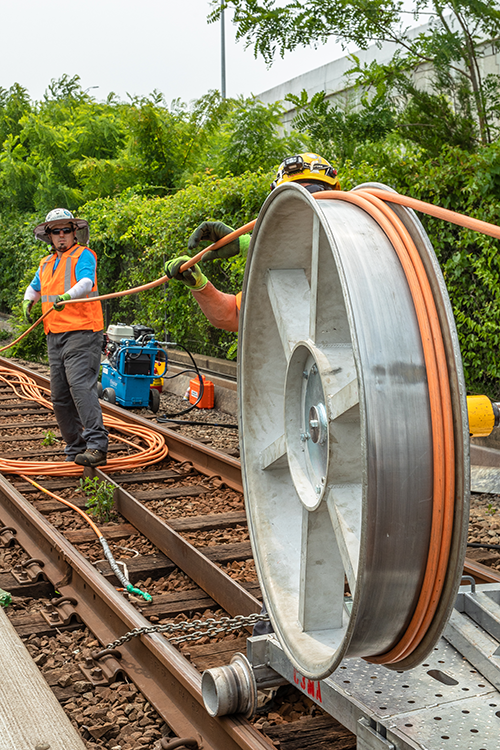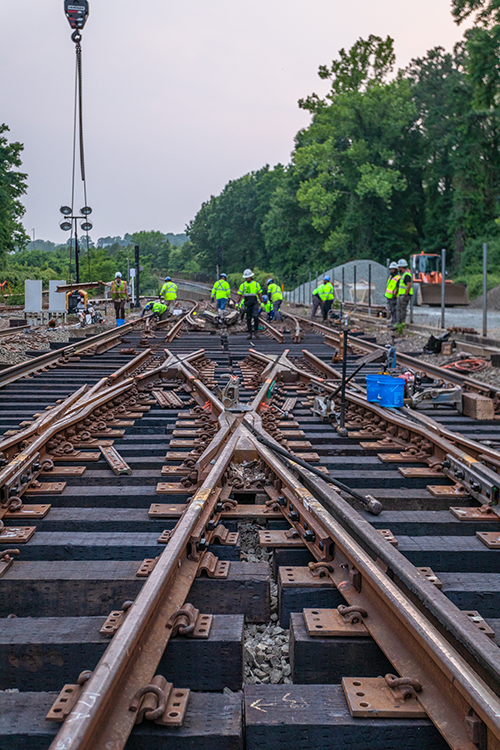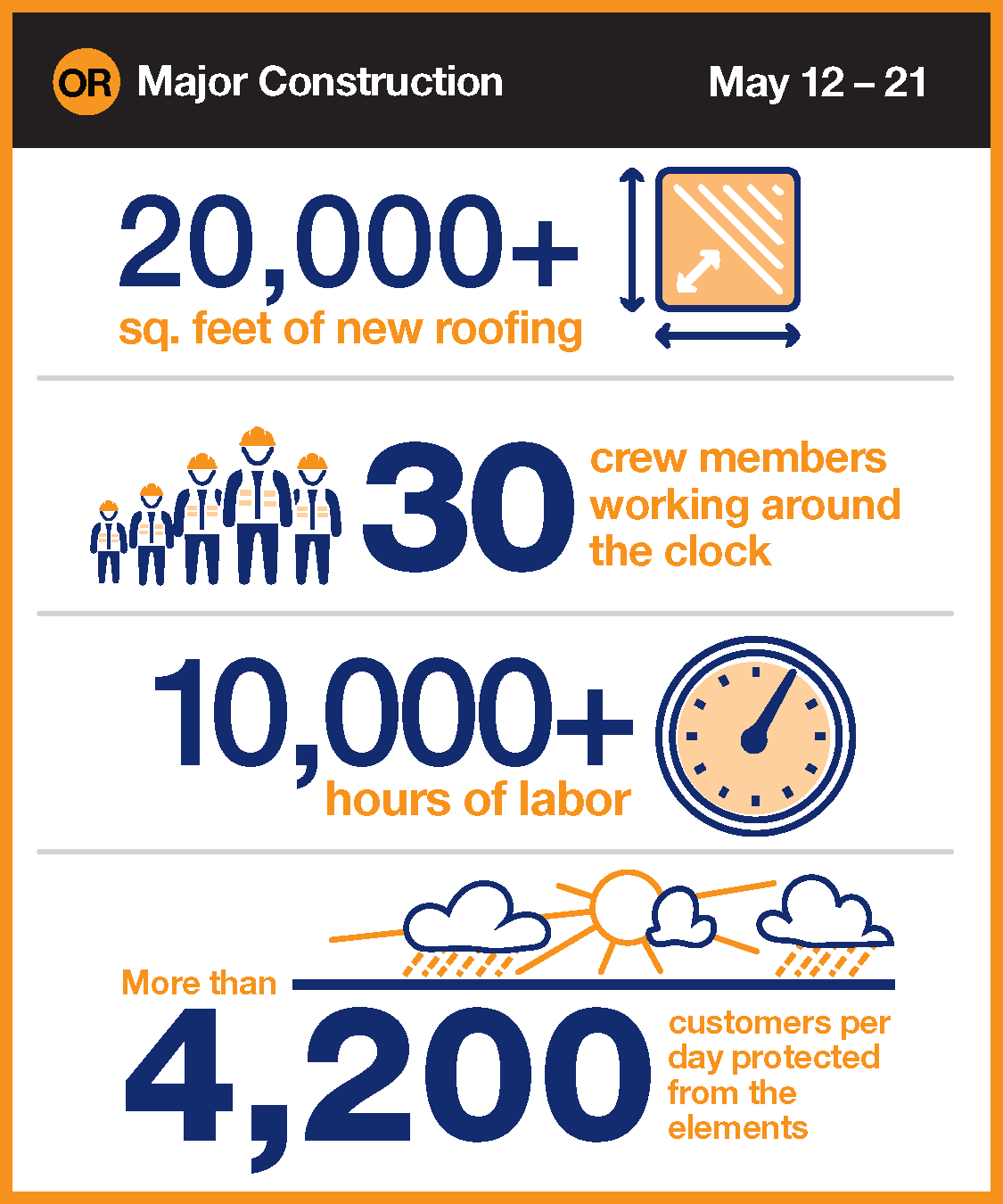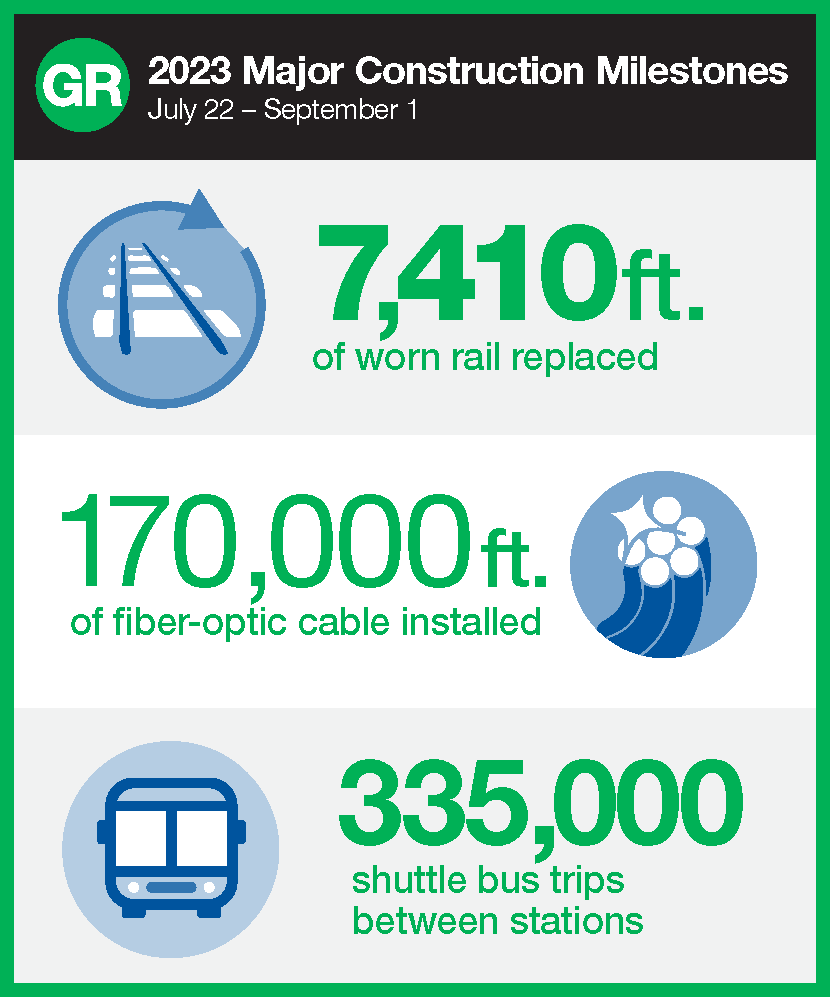2023 Major Construction

Greenbelt, College Park-U of Md, Hyattsville Crossing, and West Hyattsville stations are now open! Thank you for your patience as we worked to improve your Metro.
We've completed the 2023 Major Construction maintenance initiative! We appreciate your patience while we worked to improve your Metro. The improvements we completed this summer make the Metrorail system safer and more reliable and pave the way for future technology upgrades.
This summer, our teams installed more than 26 miles of new rail and 72 miles of fiber-optic cables across the Orange, Silver, and Green lines. During each phase of the work, crews also took advantage of the closures to install new switch box machines to prevent unwanted customer delays and clear vegetation that could cause disruptions and obstruct operator visibility.
Orange Line Improvements
On the eastern end of the Orange Line in Maryland, crews completed crucial structural work and roof waterproofing on canopies at the Minnesota Ave, Deanwood, and Cheverly stations, with over 20,000 square feet of new roofing installed. These new roofs provide more than 4,200 customers protection from the elements every day.
On the western end of the Orange Line in Virginia, crews installed 26 miles of new rail between Ballston-MU and Vienna stations. The new rail replaced the original 40-year-old rail, making this section of track more reliable. Customers are already seeing the benefits in this area of Orange Line. Reliability for the section of track that underwent rail replacement improved more than 50 percent in the month following the shutdown.
Green Line Improvements
On the northern end of the Green Line, crews installed 32 miles of fiber-optic cables. Upgrading the fiber-optic cables provides a foundation for advanced communications-based technology to improve service reliability and efficiency. Communications-Based Train Control systems, equipment automation, real-time communications, and state-of-the-art security cameras depend on fiber-optic cables to support a higher capacity and bandwidth over longer distances with less interference. Enabling these technologies reduces the need for future maintenance that would disrupt Metrorail service.
